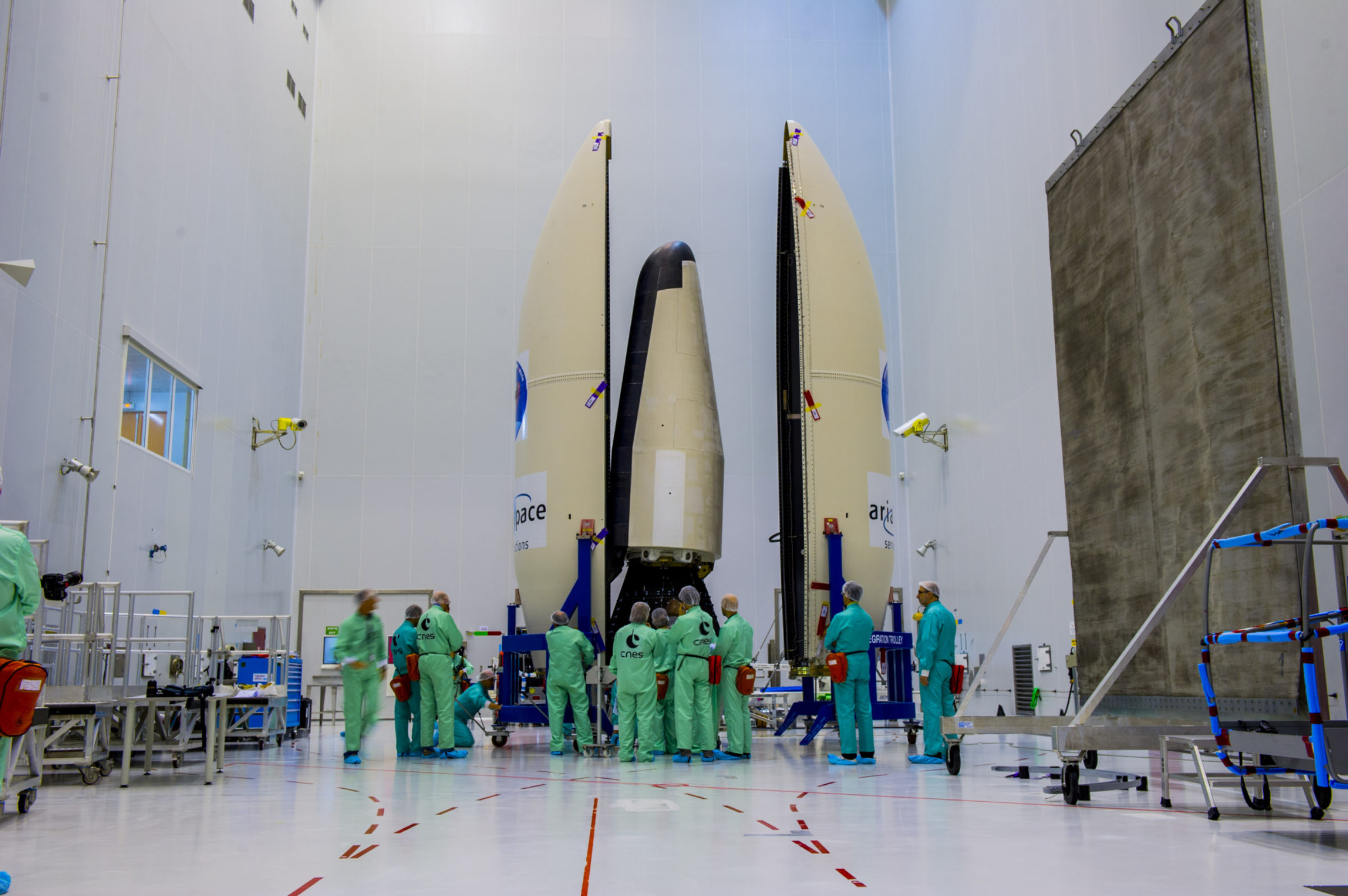Jason Davis • Feb 09, 2015
Two Days, Two Launches and Three Landings
Update, 2-11 5:00 p.m. EST: SpaceX has scrubbed the attempt to land their Falcon 9 rocket's first stage on the drone ship, citing three-story-high waves in the Atlantic Ocean.
Update, 2-10 6:00 p.m. EST: The launch of DSCOVR was scrubbed due to high upper-level winds. The next retry attempt is Wednesday, Feb. 11 at 6:03 p.m. EST.
It’s going to be a busy week of spaceflight. Within a two-day span, there are two rocket launches and three ocean landings scheduled—one of which involves an autonomous spaceport drone ship.
SpaceX will have recovery operations taking place in both the Atlantic and the Pacific—possibly within a span of two hours. A space weather satellite is headed to the far reaches of Earth’s gravitational influence, and on Wednesday, the European Space Agency is testing an experimental vehicle that could pave the way for new types of reusable spacecraft. Here’s a brief roundup of everything expected to happen.
Dragon returns
After a one-month stay at the International Space Station, SpaceX’s Dragon capsule is packed with cargo and ready to return to Earth. On Monday, the crew sealed Dragon’s hatches. The spacecraft will be unberthed Tuesday afternoon and released by the station’s robotic arm at 2:09 p.m. EST (19:09 UTC). Dragon will then fire its thrusters to slowly pull away from the station.
A de-orbit burn will begin at 7:00 p.m., providing the weather in the Pacific Ocean is acceptable for recovery forces. Splashdown is currently scheduled for 7:45 p.m.
DSCOVR heads to L1
On Tuesday evening, less than an hour before Dragon begins its de-orbit burn, a SpaceX Falcon 9 rocket is scheduled to launch DSCOVR, the Deep Space Climate Observatory. DSCOVR is a joint mission between NASA, NOAA and the U.S. Air Force. Launch is scheduled for 6:05 p.m. EST (23:05 UTC).
DSCOVR will spend about a month traveling to Lagrangian Point 1 (L1), a gravitationally balanced spot between the Earth and sun. There, the spacecraft will observe the solar wind, providing up to an hour’s worth of warning for geomagnetic solar storms that can disrupt our planet's power grids. Another instrument aboard the spacecraft is EPIC, the Earth Polychromatic Imaging Camera. EPIC will capture full-disc views of the Earth in 10 different wavelengths, showing scientists the global distribution of everything from ozone to vegetation.

DSCOVR is SpaceX’s first interplanetary payload. The satellite will spend four months in transit to L1. Launch was originally planned for Sunday afternoon, but an Air Force radar glitch scrubbed the attempt.
Falcon 9 first stage landing attempt
The DSCOVR launch also gives SpaceX a retry attempt to land the first stage of a Falcon 9 rocket on an autonomous drone ship in the Atlantic Ocean. Last month’s attempt came close, but the rocket stage lost control and crashed after it ran out of the hydraulic fluid used to move its four stabilization fins.
SpaceX CEO Elon Musk said that the trajectory required to send the rocket on its way toward deep space will make it even more difficult to return the first stage this time around. The drone ship has been moved further out to sea, and Musk tweeted that the rocket would be under twice as much stress.
Rocket reentry will be much tougher this time around due to deep space mission. Almost 2X force and 4X heat. Plenty of hydraulic fluid tho.
— Elon Musk (@elonmusk) February 8, 2015Intermediate Experimental Vehicle test flight
The European Space Agency’s Intermediate Experimental Vehicle, or IXV, is a wingless spacecraft designed to test out reentry technologies required to bring a spacecraft safely back from orbit. The United States, Russia and China are currently the only nations with this capability. IXV’s belly is shielded with carbon fiber-ceramic panels that protect it from the heat of reentry.

While IXV has no wings, its shape gives it enough lift to glide. There are two moveable flaps on the rear of the spacecraft for steering, along with a set of reaction control thrusters. IXV will launch atop a Vega rocket from ESA’s Guiana Space Center in French Guiana. Upon separating from Vega, the craft will coast to a height of about 420 kilometers—about the altitude of the International Space Station. The mission’s trajectory is suborbital, bringing IXV back into the atmosphere about an hour and 20 minutes after liftoff. Parachutes will bring the spacecraft in for a final splashdown in the Pacific, where recovery forces will be waiting.
Launch time is set for Wednesday at 8:00 a.m. EST (13:00 UTC), with splashdown expected at about 9:42 a.m.
Let’s Go Beyond The Horizon
Every success in space exploration is the result of the community of space enthusiasts, like you, who believe it is important. You can help usher in the next great era of space exploration with your gift today.
Donate Today

 Explore Worlds
Explore Worlds Find Life
Find Life Defend Earth
Defend Earth

